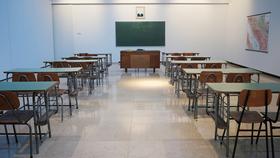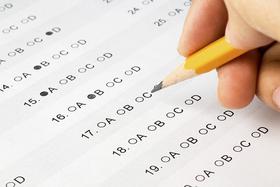5 Financial Aid Dos and Don'ts
Dealing with private school financial aid can feel like conducting a complex symphony - each section must be perfectly timed and harmoniously arranged. From understanding why costs vary dramatically between institutions to knowing exactly when to submit your applications, the process requires careful orchestration. Whether you're considering a prestigious boarding school or a specialized day program, this guide will help you master the intricate movements of financial aid applications, revealing key strategies and common pitfalls to avoid.
1. DO Understand Why Some Private Schools Cost More Than Others
Several factors drive tuition costs. Location, facilities, and type of school are three of the most important factors.
Location
Some schools cost more than others simply because of where they are located. Real estate prices vary widely throughout the United States, as you well know. For example, it costs considerably less to rent space in Butte, Montana, than in Los Angeles, California. Insurance costs vary from locality to locality as well. Schools need comprehensive liability and property insurance. That's not an expense a prudent private school business manager will stint on.
Facilities
The school facilities vary widely as well. A K-6 school with twelve classrooms located in the 10-year-old education wing of a church or temple will cost less to run than a similar school housed in a 1930s mansion set on 30 private acres in the countryside. A school with extensive sports fields, riding stables, a natatorium, and a hockey rink, together with a dozen buildings for teaching and administration, will cost much more than a school with fewer amenities.
Type of School
Boarding schools generally cost more to operate than day schools. That's because they offer 24/7 supervision of your child as opposed to the 8 or 9 hours of daily supervision a day school will offer. Schools specializing in remediating learning differences and disabilities cost even more because they employ experienced, highly skilled, and trained para-professionals and professionals who work with students closely, often on an individual or 1 to 1 basis. That drives the labor cost associated with this kind of teaching much higher than when a teacher has a class of twelve to fifteen students.
2. DONT Delay Finding Out About Financial Aid
Financial aid can be very confusing for many parents. Think of financial aid as you would any credit application, and you will quickly understand that applying for financial aid from a private school is really no different from applying for a loan. The school needs your whole financial picture in order to determine whether you are eligible for an award and, if so, how much they will award you. Most schools use the Parents' Financial Statement or (PFS) to assess your situation. Are you wondering whether you make too much and have too many assets to be eligible? Private school financial aid committees will look at all your assets and liabilities in order to make their decision.
Applying for financial aid at most private schools is a separate process from applying for admission to the school. You also need to make sure that you apply as early in the cycle as you can. Each school allocates a finite amount of money to the financial aid bucket. With tuition and fees at many day schools hovering in the thirty thousand range and those at boarding schools topping sixty thousand, you can see how quickly a couple of full tuition awards will eat up a school's financial aid budget. So, don't delay. Find out the answers to your questions. Submit your PFS. Know where you stand.
Several schools now offer a virtually free education if your family income is below a certain number. Exeter, Andover, Groton, St. Paul's, and Deerfield all have financial aid programs that offer a tuition-free education to admitted students whose income is below a certain threshold. The threshold varies but is in the hundred thousand to one hundred ten thousand range.
Most schools have some form of a sliding scale of aid. You may think that you are ineligible for financial aid because your family income is more than $200,000. The truth is that you may indeed be eligible for some help. It will depend on factors such as how many children you have at the school or in college, as well as your lifestyle and many other factors. For example, if you have two children in boarding school and another at a private college, those kinds of tuition expenses will be a significant drag on most upper-middle-class incomes. Discuss your requirements with the school. It never hurts to ask.
Private schools recognize that they need to offer more aid to more families in these very tough financial times. Many more families who normally might be able to afford private school are asking for help. Schools have reallocated resources to make sure that they can meet the increased demand. Donors are helping with major gifts to their alma mater, specifically earmarked for financial aid programs.
Financial aid can be a complicated proposition. You may even find it intrusive and embarrassing. The truth is that there is much more at stake, namely, your child's future. So, get your affairs in order. Gather all the required paperwork and forms. Complete your PFS (Parents' Financial Statement). Submit everything as early as you possibly can.
DO Take Advantage of All the Options Available to You and Your Family
Some people can write a check for a year's tuition and never miss it. But with private school tuitions running over thirty thousand for day school and topping sixty thousand for boarding school, the rest of us have to be creative.
Here are some options for paying for a private school education.
Pay in one installment.
If you write a check or wire funds, ask for a cash discount. Many schools will discount the fees by 1 or 2%.
Pay the fees in two installments.
Private schools generally render their bills in early summer and late fall for payment within 30 days. These invoices will include one-half of the academic year's tuition charge as well as incidentals. Incidentals include fees for items such as technology, sports, activities, laundry, and so on. Be sure to ask whether the school offers a cash discount.
Sign up for a tuition payment service and pay monthly installments.
The way these plans work is that you, in effect, are borrowing from them. You borrow one year's tuition fees and incidentals. Then, you repay in equal installments, generally 10 installments. The plan, in turn, pays the school on the tuition due dates. This is a good payment option if you need to spread the payments over several months. Not all schools accept all these plans. Each school makes its arrangements with a specific tuition payment service. These firms offer private school tuition payment plans:
Borrow the funds you need.
Depending on your financial circumstances, an old-fashioned loan may be your best option. Consult your financial adviser.
Apply for financial aid.
Just about every school offers some financial aid. The important thing is to ask about financial aid. Don't assume that you are not eligible just because you are at a certain income level. Many factors are considered when awarding financial aid. Schools with more than 70% of their students on financial aid can be found here. The financial assessment tool you need to use is the Parents' Financial Statement or PFS.
Phillips Exeter, Groton, and St. Paul's are some of the top prep schools in the vanguard of offering a 'free' education to qualified applicants from families with less than $100,000 income. You will find more schools offering this kind of need-blind assistance, although its availability depends on the financial resources of each school.
In addition, there are several schools around the country which are tuition-free or virtually so by design:
Investigate other funding sources.
Many states and communities offer scholarships. Some employers offer assistance with tuition. Unions, brotherhoods, and societies are also additional sources of education funding.
This video explains how to pay for private school tuition.
DONT Omit Any Information on Your Parent's Financial Statement
Many private schools use the National Association of Independent Schools' Parents Financial Statement to help assess a family's financial needs. The Parents Financial Statement (or PFS) instructions and application can be found on the School and Student Services website. School and Student Services is a subsidiary of the National Association of Independent Schools. It gives you access to over 2,000 schools that use this service to help them assess the financial needs of parents applying for financial aid.
What is really helpful about SSS is that you only have to complete the application once. There is a one-time fee of $35. If you cannot afford the application fee, the fee can be waived by using the unique fee waiver code that the school will give you.
The Parents Financial Statement Instruction Booklet walks you through each step of the process. Remember that you only complete the PFS if the school asks you to. After completing the application, you pay for it - currently a $35 fee - and submit your application. This will do two things: it sends your application to the schools you have selected, and it gives you an estimate of the kind of aid you can expect to be offered. Now, you must realize that the SSS estimate is only that. Each individual school will determine the amount of financial aid you will receive based on the available pool of funds which each school has available. Actually, the schools look at financial aid from the point of view of how much you can contribute towards the cost of your child's education. That is really what the PFS helps the schools determine in an objective manner.
DO Remember That Financial Aid Programs Vary from School to School
Each private school is unique. It sets its own academic agenda and manages its own finances. This is important for parents to understand because that same unique approach applies to financial aid. In other words, what one school tells you it will award in financial aid will not be what another will offer. Their financial aid budgets are not identical. The demands on those financial aid budgets will be different. That's why it is so very important to ask each school how its financial aid program works. Assume nothing.
Financial Aid Application Quick Reference Checklist
Before You Begin
Gather tax returns and financial documents for the past 2-3 years
Create a list of all schools you're considering with their application deadlines
Research each school's specific financial aid policies and requirements
Documentation Essentials
Complete tax returns
W-2 forms and 1099s
Bank statements
Investment account statements
Business records (if self-employed)
Records of unusual expenses or circumstances
Timeline Actions
Submit FAFSA (if required) as early as possible after October 1st
Complete School and Student Service (SSS) forms if needed
File supplemental financial aid forms specific to each school
Meet individual school deadlines (typically January-February for the following academic year)
Follow-up Steps
Confirm receipt of all submitted materials
Keep copies of everything submitted
Note interview dates and requirements
Track responses and decision timelines
Compare aid offers before making final decisions
Final Review
Double-check all numbers for accuracy
Verify you've disclosed all assets and income
Ensure all required signatures are in place
Confirm you've explained any special circumstances in writing
Remember to treat this process like a professional engagement - maintain detailed records and meet every deadline with time to spare.
Conclusion
Don't forget that each private school's financial aid program plays its own unique melody. Like different orchestras interpreting the same score, schools may offer varying levels of support based on their resources and philosophies. The key is to approach each institution individually, understanding their specific requirements and timelines. By following these financial aid dos and don'ts, you'll be better positioned to create opportunities for your child's educational journey, turning what might seem like a daunting financial challenge into an achievable goal.
Questions? Contact us on Facebook or Instagram. @privateschoolreview
#PrivateSchoolTips #FinancialAid #EducationCosts #SchoolChoice #TuitionAssistance #PrepSchool #EducationPlanning













